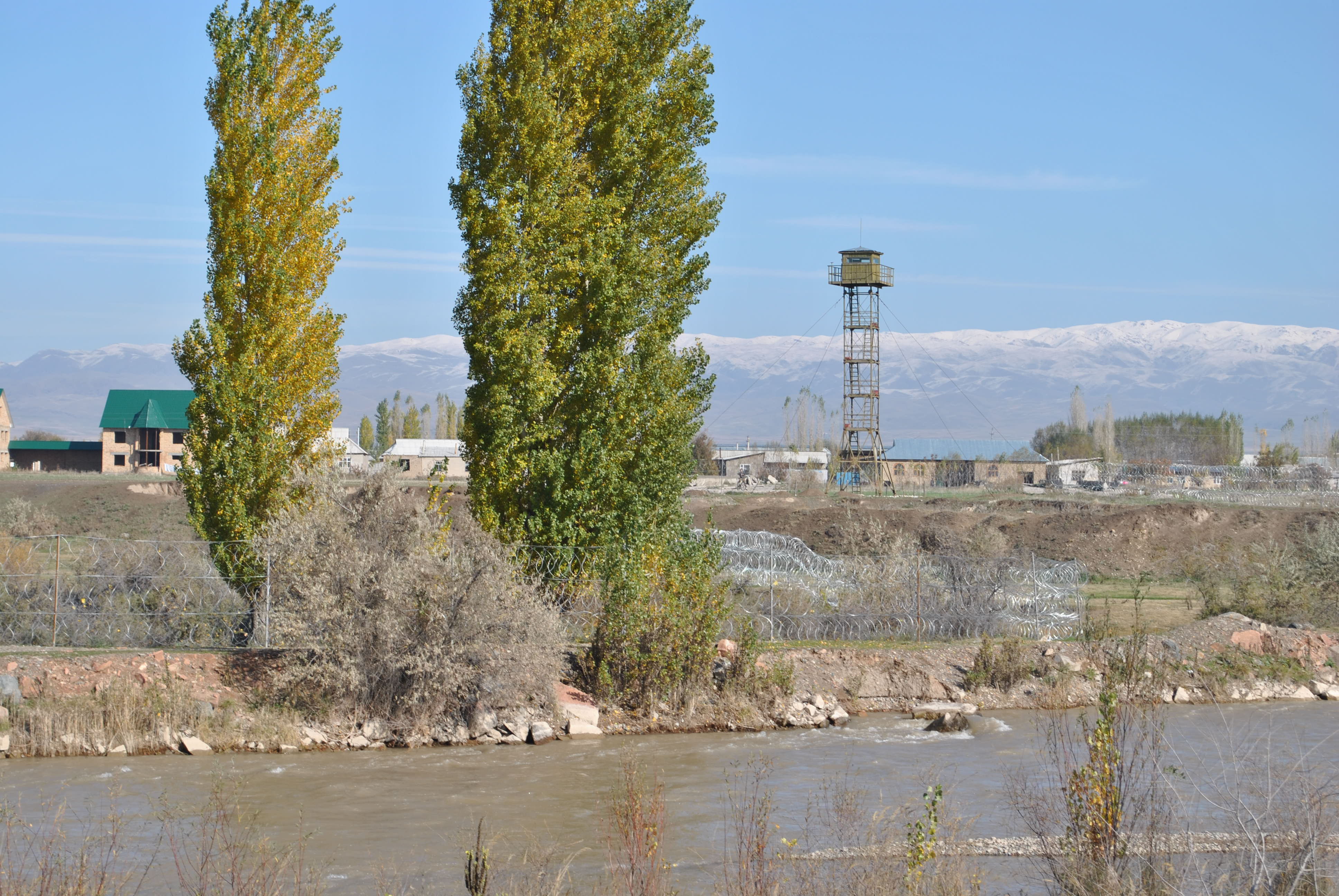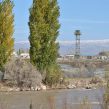
Borders Hardening Throughout Central Asia in Anticipation of NATO Pullout
Publication: Eurasia Daily Monitor Volume: 9 Issue: 96
By:

Kyrgyzstan’s Border Guards Service announced on May 9 that the United States will finance the construction of six facilities in Kyrgyzstan for use by Kyrgyz security forces. They will include a barracks, a command center for the Border Guards’ southern services and new checkpoints. The US Embassy confirmed the plans to build the facilities through CENTCOM, though no specifics were provided (paruskg.info, May 11).
These facilities would be constructed in addition to a $5.5-million anti-terrorist training center that the US intends to build for Kyrgyzstani forces in the southern part of the country. Plans for this center had been floated at various times since 2009. American military trainers have long provided training to troops in the south, though none have been based at local facilities, and Kyrgyzstan’s Border Service reported that no US troops would be based at any of the facilities to be built (azzatyk.kg, May 11).
Despite such assurances, all proposals to provide military assistance in the form of installations met with immediate controversy in local and Russian media (Nezavisimaya Gazeta, May 16). Russia has long been of two minds on America’s presence in Central Asia, generally supporting the NATO mission in Afghanistan, while opposing any permanent troop presence or any notion of enduring US security interests in the region. However, Russia may actually tolerate such improvements in Kyrgyzstan’s border security.
Russia seems to have tabled its long-planned CSTO anti-terrorism base in southern Kyrgyzstan due to opposition from Uzbekistan, which resisted having Russian troops just across its border. As there seems to have been no opposition to the US assistance, it is possible that Uzbekistan takes the Americans at their word on the issue of troop basing.
The Pentagon has prioritized improving the border security capacity of both Kyrgyzstan and Tajikistan. Such assistance is well-received in the region, where local authorities and experts are increasingly concerned that the ISAF’s withdrawal from Afghanistan will lead to the return of some Central Asian insurgents to their homelands. Alexander Knyazev, an influential political analyst based in Kazakhstan who some associate with the Kremlin, recently expounded on these fears at length, while also claiming that the Pentagon had its sights on basing rights at dozens of facilities and airstrips in the region (Regnum.ru, April 26). Local criticism such as this notwithstanding, the regional trend of seeking to bolster the security and impermeability of borders can be observed beyond just Kyrgyzstan. While each country inherited fortified borders with Iran, Afghanistan, and China from the Soviet Union, fortified borders between the Central Asian republics are fast becoming the rule, rather than the exception.
Uzbekistan has long maintained a hardened border with Tajikistan that helps it to effect blockades against its neighbor over water use and the movements of insurgents. Though no comprehensive information exists, some reports suggest that half of the length of the border is mined (MirTV, April 8). Uzbekistan has also set about rebuilding fortifications that were compromised during the mass flight of Uzbeks from southern Kyrgyzstan in June 2010. Uzbekistan has largely sealed its border with Kyrgyzstan ever since, re-opening only one crossing more than 18 months later (Kloop.kg, October 27).
Coinciding both with those events and its entry into the Customs Union, Kazakhstan set about fortifying its border with Kyrgyzstan for the first time. In some areas, through the mid-2000s, the border between these two largely friendly neighbors had been barely marked, and smuggling was commonplace. Now, dual 12-foot concertina wire fences line Kazakhstan’s side of this border, patrolled by cars, and overlooked by guard towers (author’s personal observations). In April, Kazakhstan announced its intention to strengthen its border with Turkmenistan and Uzbekistan, extending this border fence along its entire southern border (TengriNews.kz, April 26).
Given Astana’s increasingly close foreign policy alignment with Moscow, this line of border fortifications seems poised to become a hard frontier of the planned Eurasian Union. While Turkmenistan and Uzbekistan have not voiced interest in joining these integration projects, Kyrgyzstan has repeatedly expressed its commitment. Tajikistan has expressed interest in joining after Kyrgyzstan accedes and a shared border with the bloc is established.
But Kazakhstan’s strengthening of its borders directly contradicts the Customs Union’s policy of open borders. Kazakhstan is even building new customs clearance facilities at its main cargo points of entry with Kyrgyzstan, suggesting it has no intention of permitting truly open-border trade with its southeastern neighbor (EurasiaNet.org, November 7, 2010).
Russian actions, on the other hand, are dictated by its own motives regarding Central Asian borders, especially as they relate to Russian security. While Moscow will try to maintain in-depth defense through the extension of its basing of the 201st division in Tajikistan, it appears Russia has determined that its best line of defense is Kazakhstan’s external border. On the other hand, Kyrgyzstan and Tajikistan, both CSTO members, may be left out of some aspects of the Moscow-led regional security umbrella. Kyrgyzstan may have seen a preview of this policy when Russia pointedly declined a request for assistance from Kyrgyzstan in June, 2010.
As all five Central Asian republics prepare for increasing security challenges emanating from Afghanistan, their natural inclination has been to strengthen border security. Both the Pentagon and the Kremlin have found roles for themselves in the interim, and have managed not to encroach too egregiously on each other’s short-term interests. Whether their interests in strengthening the region’s internal security remain aligned after the NATO withdrawal is an open question.




